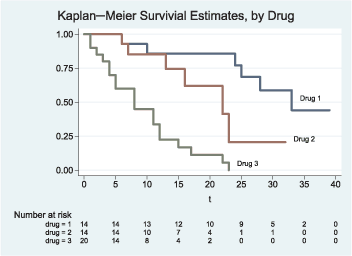
This page announced updates in Stata 10. See a complete overview of all of Stata's survival analysis features. |
| Order |
 New option risktable() places a
subjects-at-risk table underneath and aligned to the survival or
hazard plot.
New option risktable() places a
subjects-at-risk table underneath and aligned to the survival or
hazard plot.